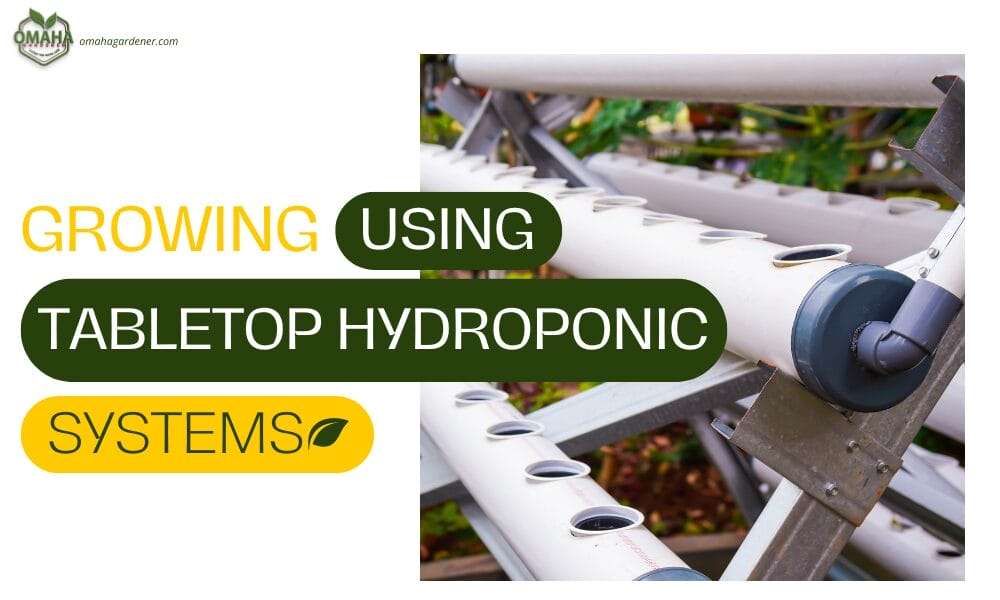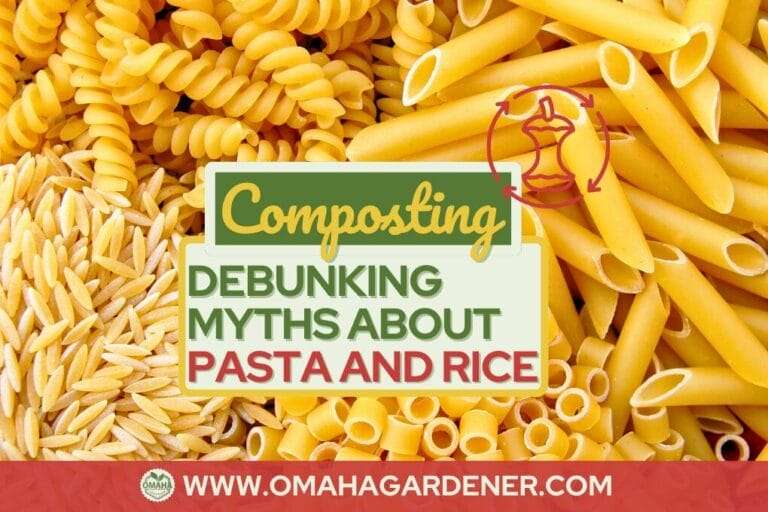
Tabletop hydroponic systems provide a compact solution for individuals wanting to grow fresh produce in limited spaces. These systems utilize water flow, nutrient-rich solutions, and grow lights to ensure optimal plant growth without soil
In an era where many of us find ourselves confined to small living spaces, disconnected from the outdoor world, the principles of table-top hydroponic systems have risen as a great option for those looking to grow their own food, even in the tiniest of apartments.
This innovative approach to gardening offers a solution that combines the best hydroponic system features with a minimal carbon footprint, making it a good idea for anyone with limited space, a green thumb, and a desire for healthy, fresh greens all year round.
Table of Contents
5 Principles of Tabletop Hydroponic Systems
1. Hydroponic Gardening
Hydroponic gardening focuses on delivering nutrients directly to the plants' roots while providing sufficient oxygen, creating a highly efficient and controlled environment. Hydroponic gardening offers the advantage of faster growth rates, greater yields, and the ability to grow plants in locations with limited access to natural light or traditional gardening space.
2. Modular Design
The modular design of table-top hydroponic systems offers a high degree of flexibility. It allows growers to adapt their setups to the available space and the number of plants they want to cultivate. Whether you have a small living space or a larger area, these systems can be adjusted to accommodate your needs. This adaptability is a significant advantage for those seeking to maximize their indoor gardening capabilities.
3. Water Flow
Controlled water flow in hydroponic systems is essential to ensure that plants receive consistent hydration. It prevents overwatering and allows for precise distribution of the nutrient-rich water to the plants' roots. The regulated water flow also minimizes the risk of nutrient imbalances, which can affect plant health. By maintaining a stable and measured flow, these systems create the ideal conditions for plant growth.
4. Total Control
One of the most significant advantages of hydroponic systems is the total control they offer over the plant's environment. Growers can adjust variables like nutrient levels and water temperature with precision. This level of control allows for optimal growth conditions and can be fine-tuned to the specific needs of different plants. It's a perfect solution for those who want to tailor their gardening experience to achieve the best results.
5. Low Maintenance
Table-top hydroponic systems are known for their low maintenance requirements. The controlled environment, automated features, and absence of soil reduce the effort needed to care for the plants. This makes hydroponic gardening a great choice for busy individuals who want to enjoy the benefits of growing their own food without the hefty price tag of traditional gardening. Additionally, these systems are a sustainable choice, as they typically have a lower carbon footprint compared to conventional gardening practices.
Components of a Tabletop Hydroponic System
Water Pump
The water pump is a crucial component of any hydroponic system. It serves the essential role of circulating the nutrient-rich water throughout the system, ensuring that the plant roots have continuous access to the required nutrients. Without a water pump, stagnant water can lead to oxygen depletion and hinder the growth of your plants.
By maintaining a steady flow, the water pump helps to simulate the natural irrigation process, providing the roots with a consistent supply of nutrients, which is especially important for achieving healthier and faster plant growth in a soil-less environment.
Grow Light
In indoor hydroponic systems, providing the right light conditions is paramount for plant growth. This is where grow lights come into play. Whether they are built-in LED lights or natural light sources, they ensure that your plants receive the full spectrum of light they need to thrive.
Grow lights can be tailored to the specific light requirements of different plants, allowing you to grow a variety of species in an indoor setting, even during the winter months. These lights mimic the sun's rays, allowing you to enjoy healthy and lush plants year-round.
Nutrient Solution
Hydroponic gardening relies on a nutrient-rich solution to provide the essential elements for plant growth. This liquid concoction typically consists of water and a balanced mixture of vital nutrients like nitrogen, phosphorus, and potassium, along with trace minerals.
By directly delivering these nutrients to the plants' roots, the hydroponic system eliminates the need for soil. The precise control of nutrient levels in the solution ensures that plants receive exactly what they need to flourish, making it a highly efficient method for growing healthy and robust crops.
Growing Medium
The growing medium in a hydroponic system serves as a base for the plants' roots to grow and offers support to the plants. Common growing mediums include plant pods, seed pods, or net pots, each of which provides a stable environment for the plants. By using these mediums, plants can focus their energy on growth rather than searching for nutrients in soil. This allows for optimal root development and makes it easier to manage and transplant plants when needed.
Water Reservoir
The water reservoir in a hydroponic system is like a lifeline for your plants. This large tank stores the nutrient-rich water, maintaining a stable water level and preventing evaporation. It ensures a constant supply of water to the plants, minimizing the risk of water stress and nutrient imbalances. The reservoir's size is often determined by the scale of the system and the number of plants being grown, allowing you to customize it to your specific needs.
Built-in Timer
Automation is a key feature of table-top hydroponic systems, and the built-in timer plays a crucial role in this automation. It controls the watering and lighting schedules, reducing the need for constant manual intervention. By setting specific intervals for watering and adjusting the light cycles, you can optimize plant growth and minimize maintenance efforts. This feature is particularly convenient for individuals with busy lifestyles.
Setting up Your Tabletop Hydroponic System
In this section, we will explore how to choose the right system for your space, assemble it effectively, select the ideal plants for your first endeavor, and prepare the nutrient-rich solution necessary for your plants to thrive. We'll also cover the planting process, monitoring tips, and the eagerly awaited harvest.
1. Choose a System
Start by researching table-top hydroponic systems available from online retailers or local shops. Consider the dimensions of your living space and find a system that fits comfortably within it. Various models have different features, so choose one that best suits your needs. Some systems are compact and designed for small spaces, while others are more extensive and may accommodate a wider variety of plants.
I received the 3-pod Aero garden as a Christmas gift a couple of years ago and initially thought I would prefer the 9-12 pod unit. However, it fits perfectly on our ledge, so it's perfect for our location. If you desire a larger unit read our blog post review on the IDOO Hydroponics Growing System
2. Assembly
Once you've acquired your hydroponic system, follow the provided instructions for assembly. Pay close attention to the setup requirements, which often include connecting the water pump, positioning the grow lights, and installing the water reservoir.
Ensure the system is placed in a location that either receives sufficient natural light or is near a grow light source. Adequate lighting is crucial for the photosynthesis process and the overall success of your indoor garden.
3. Plant Selection
As a beginner, starting with easy-to-grow plants for your hydroponic system is advisable. Leafy greens like lettuce, spinach, and kale are excellent choices, as they tend to thrive in hydroponic environments. Fresh herbs such as basil, mint, and parsley are also good options, as they're known for their resilience.
For those who want a slightly more challenging plant to cultivate, consider cherry tomatoes. These choices provide a variety of flavors and are suitable for compact indoor gardening systems.
4. Nutrient Solution
To prepare a nutrient-rich solution for your hydroponic system, follow the guidelines provided by the manufacturer or the instructions that accompany your system. These guidelines often specify the proper ratios and concentrations of essential nutrients required for plant growth.
The nutrient solution typically consists of water and a mixture of vital nutrients and minerals like nitrogen, phosphorus, potassium, calcium, magnesium, and trace elements. Accurate solution preparation is crucial to ensure that your plants receive the nutrients necessary for healthy growth.
5. Planting
Once your nutrient-rich solution is ready, it's time to plant your chosen crops. Depending on your system, you may use seed pods, plant pods, or net pots as the planting medium. Carefully place your seeds or seedlings into the pods, ensuring they are secure and their roots have access to nutrient-rich water.
The specific planting process may vary depending on your hydroponic system, so follow the system's guidelines for this step.
6. Monitor
Consistent monitoring is essential to ensure the well-being of your plants. Keep an eye on the water levels in the reservoir to ensure they remain stable and don't drop to a critical low.
Additionally, monitor nutrient levels in the solution, as some plants may consume nutrients at different rates. Adjust the nutrient solution and water levels as necessary to maintain optimal plant growth conditions.
7. Harvest
With a well-maintained hydroponic system, you can expect to harvest your own fresh crop in just a couple of weeks. Harvesting times will vary depending on the specific plants you've chosen.
Leafy greens are often ready for harvest within a few weeks, while herbs may take slightly longer. Cherry tomatoes typically require a bit more patience.
As you reap the rewards of your indoor garden, you'll enjoy the taste of homegrown, healthy, and pesticide-free produce, even in the heart of winter. Remember to maintain the system to enjoy continuous harvests of your favorite plants.
20 Best Plants for Tabletop Hydroponic Systems
Now that we've discussed the setup and the process of hydroponic gardening let's delve into the exciting world of plant selection. Growing the right plants is key to a successful tabletop hydroponic garden.
For newcomers to this innovative gardening method, starting with easy-to-grow plants is a good idea and a guarantee of success and satisfaction. Just like when I started with basil, I was pumped to move forward with my hydroponic journey since I could create a lot of pesto sauce for Christmas back then!
- Basil Pods: These aromatic herbs thrive in hydroponic systems and add a delightful flavor to your dishes.
- Leafy Greens: Varieties like lettuce, kale, and spinach are a staple for any table top hydroponic garden.
- Cherry Tomatoes: Small-scale systems can produce these delicious, bite-sized fruits.
- Mint: This herb grows wonderfully in hydroponic systems and is perfect for teas and garnishes.
- Cilantro: A popular herb that can be easily cultivated indoors.
- Spinach: A leafy green that is packed with nutrients.
- Chives: These aromatic herbs are easy to grow and are perfect for garnishing dishes.
- Lettuce: Varieties such as Romaine and Butterhead thrive in hydroponic environments.
- Arugula: Known for its peppery flavor, it's a great addition to salads.
- Parsley: A versatile herb that's perfect for garnishing and flavoring dishes.
- Oregano: Aromatic and flavorful, it's an excellent addition to many dishes.
- Thyme: This herb compliments various recipes and is easy to maintain.
- Swiss Chard: Vibrant and nutritious, it's a fantastic choice for hydroponic systems.
- Bok Choy: A leafy green that's a staple in many Asian dishes.
- Watercress: A peppery and highly nutritious green.
- Kale: A superfood that thrives in hydroponic environments.
- Lavender: This fragrant herb is perfect for aromatherapy and culinary uses.
- Chard: Its colorful stalks and leaves make it a visually appealing addition to your system.
- Cress: Known for its peppery and slightly tangy flavor, it's a unique addition to your garden.
- Bibb Lettuce: Delicate and tender, it's perfect for salads and sandwiches.
Conclusion
By embracing hydroponic gardening principles, you can transform your living space into a thriving garden. The essential components, from water pumps and grow lights to nutrient-rich solutions and modular designs, work harmoniously to provide plants with the ideal conditions for growth. These systems are more than just a good idea; they are a testament to our ability to adapt, innovate, and embrace sustainability in our daily lives.
The quick guide provided in this article offers a straightforward roadmap to getting started with your own tabletop hydroponic system. From choosing the right system to harvesting your first crop, the journey promises the satisfaction of growing your own food and the numerous environmental benefits of using less water and reducing your carbon footprint.
As you explore the endless possibilities of indoor gardening, you'll find that this small-scale, space-efficient solution can yield a bountiful harvest. The plant suggestions, such as basil, mint, lettuce, and cherry tomatoes, offer a delicious and nutritious palette for your tabletop hydroponic system. With a little effort and a touch of your green thumb, you can look forward to reaping the rewards in just a matter of weeks!



